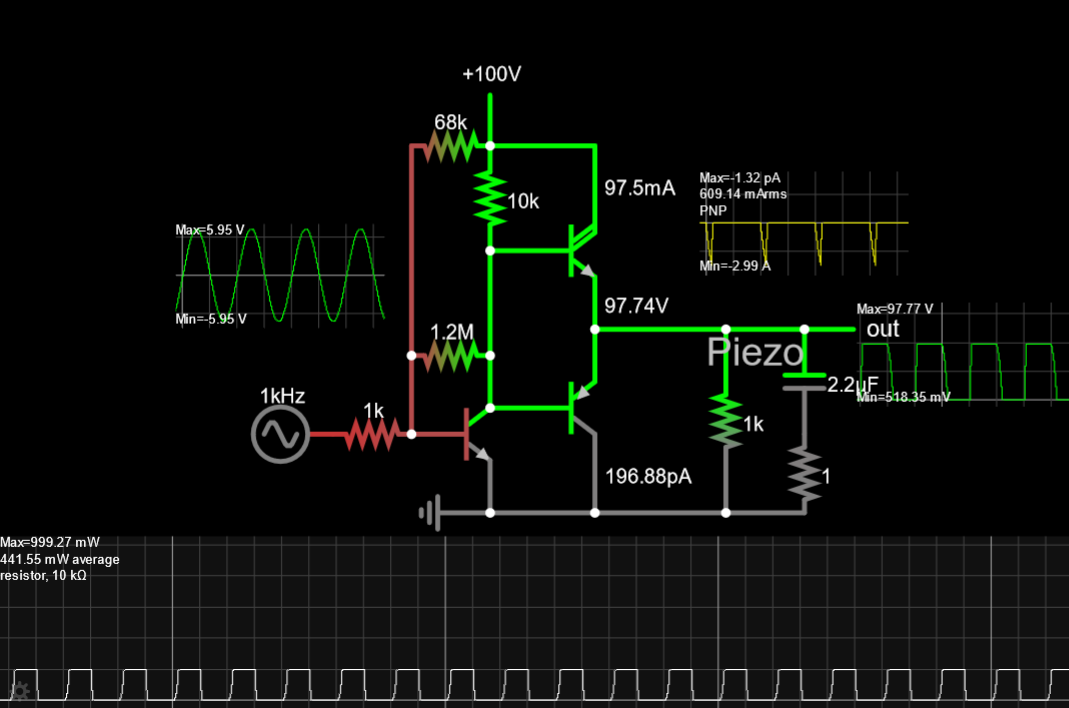The transistors are MJE340 and MJE350 and NPN and PNP pair. I am using these since I need to be able to switch a good 100- 120.
I intend this stage to feed a LC filter to make the whole thing a class D amplifier, I want to pass a 33kHz PWM that will be demodulated through the filter.
to start with I send 50% duty cycle square wave through the input, I've noticed the following while reading the voltage at the emitter end.
The 'ON' time reduces with increased frequency, gradually reducing and turning close to a pulse/impulse around 15kHz and then disappearing altogether.
The greater the collector resistor on the first stage, the worse the above effect gets even at even lower frequencies.
Removing DC (Voltage was 0 to 5 volts DC) offset at the signal (voltage -2.5 to + 2.5) seems to fix the problem and I can see 50% duty cycle square wave all the way till 55kHz. This works but I'm not sure how to accomplish this, not sure a coupling capacitor at the base would do the trick since I don't quite see a way for it to discharge through the PN junction at the base.
What would best explain this behavior and what can I do about this?
Using this as a haptic actuator, it's a PowerHap 1919 and the source voltage goes all the way up to 120 volts max. I intend this as a class D amplifier, I have an LC low pass filter that works well enough with the actuator. If only I could get a 100 volt PWM signal into that, all would be good.





